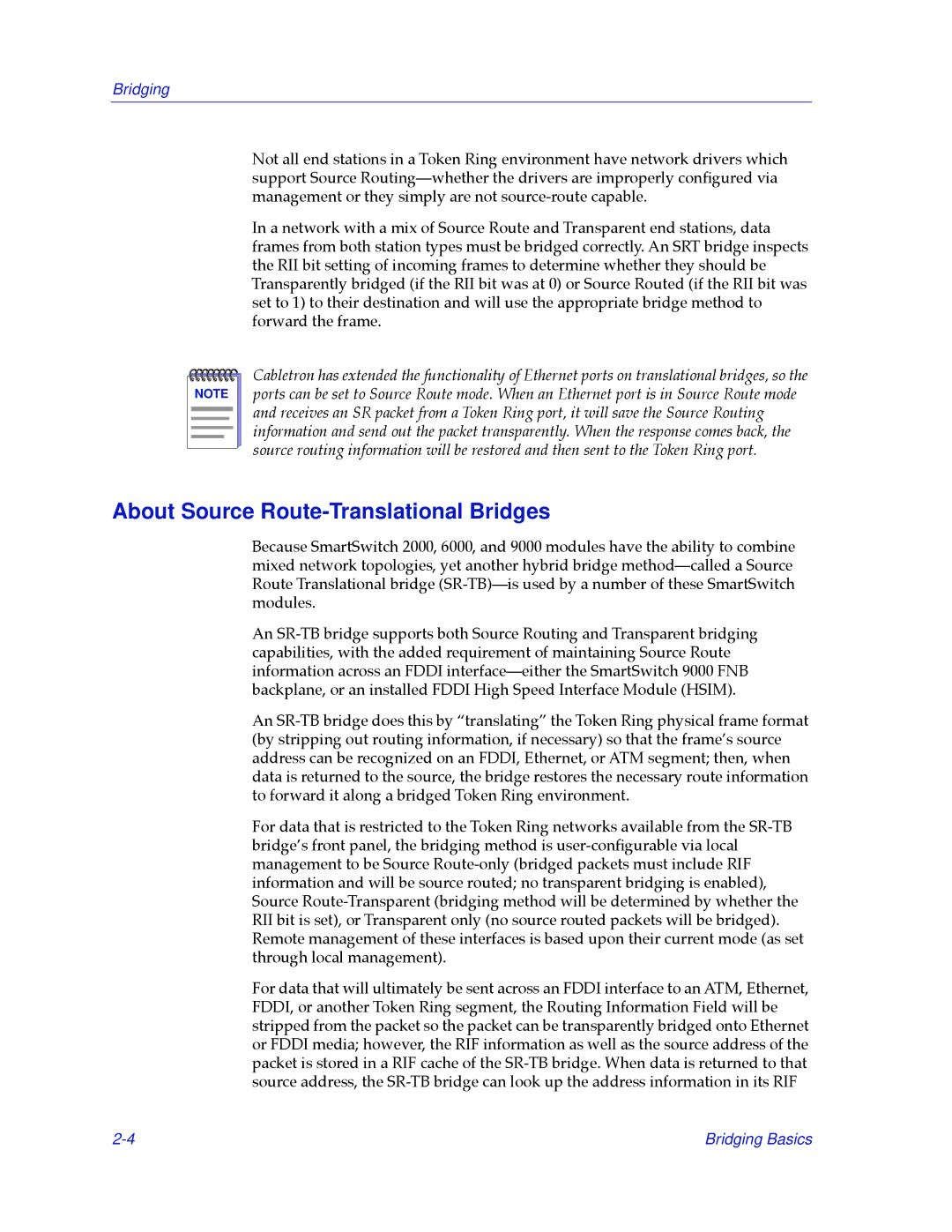
Bridging
Not all end stations in a Token Ring environment have network drivers which support Source RoutingÑwhether the drivers are improperly conÞgured via management or they simply are not
In a network with a mix of Source Route and Transparent end stations, data frames from both station types must be bridged correctly. An SRT bridge inspects the RII bit setting of incoming frames to determine whether they should be Transparently bridged (if the RII bit was at 0) or Source Routed (if the RII bit was set to 1) to their destination and will use the appropriate bridge method to forward the frame.
NOTE |
Cabletron has extended the functionality of Ethernet ports on translational bridges, so the ports can be set to Source Route mode. When an Ethernet port is in Source Route mode and receives an SR packet from a Token Ring port, it will save the Source Routing information and send out the packet transparently. When the response comes back, the source routing information will be restored and then sent to the Token Ring port.
About Source Route-Translational Bridges
Because SmartSwitch 2000, 6000, and 9000 modules have the ability to combine mixed network topologies, yet another hybrid bridge methodÑcalled a Source Route Translational bridge
An
An
For data that is restricted to the Token Ring networks available from the
For data that will ultimately be sent across an FDDI interface to an ATM, Ethernet, FDDI, or another Token Ring segment, the Routing Information Field will be stripped from the packet so the packet can be transparently bridged onto Ethernet or FDDI media; however, the RIF information as well as the source address of the packet is stored in a RIF cache of the
Bridging Basics |
